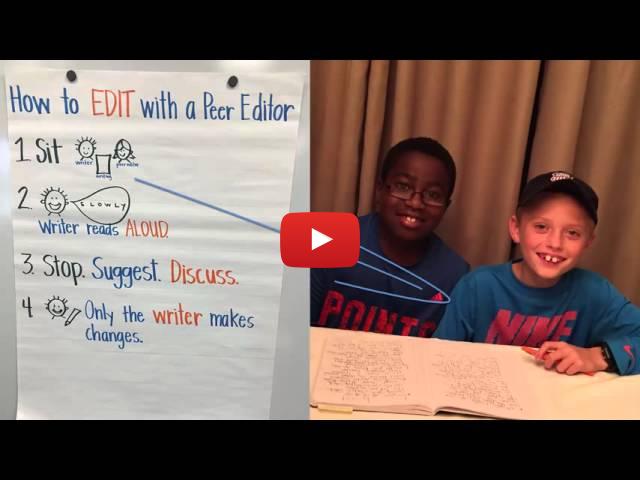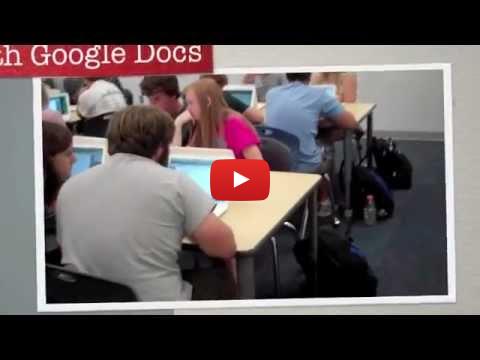Greetings to everyone When we, teachers, receive written work, we normally correct and comment on it and give it back, don’t we? Correcting written work usually takes a lot of time, especially if you teach in large groups or classes. What is more, very often students continue making the same mistakes in their writings. Therefore, letting your students correct and edit each other’s writing could be an effective solution to help them become better writers and make the lesson engaging.   
Peer editing techniques and activities in EFL/ESL classrooms What is peer editing? Peer editing is a way for students to help each other with writing. When you were a student, you probably did it or had someone do it for you. Each time you asked a friend to look over your paper, and each time friends asked you to look over their papers, you participated in peer editing. peer noun [C] a person of the same age, the same social position, or having the same abilities as other people in a group edit verb [ T ] to make a change to a text, film, etc., correcting mistakes or removing some parts, especially in order to prepare it for being printed or shown Cambridge Dictionary This does not release us, teachers, from the duty of checking and evaluating student writing, but it can be a substitute for first-draft reading. Students can work together on their first drafts, giving each other feedback on content, language and organization; they can rewrite and give the final version to the teacher. Steps to take Teach students about the peer-editing sandwich: compliment, suggest, correct. Remind students that when reviewing someone’s work, always start out by saying what they like about their work. Next, they make a suggestion and converse with their partner. Students ask questions. Then, they make corrections. By working together, they both learn from each other. Steps for peer editing: compliments, or things that the students liked about the author's writing; suggestions, or specific ideas about the author’s word choice, use of detail, organisation, topic, and clarity; corrections, or making edits directly on the piece of writing to correct spelling, grammar, punctuation, and capital letters. compliments, or things that the students liked about the author's writing; suggestions, or specific ideas about the author’s word choice, use of detail, organisation, topic, and clarity; corrections, or making edits directly on the piece of writing to correct spelling, grammar, punctuation, and capital letters.
How it works FISH BOWL TECHNIQUE If you teach at primary or secondary school, you can try this activity. Students sit together in pairs. One of them (the writer) reads his/her own writing, another student (the editor) listens. The purpose of reading aloud is to slow the brain down enough to catch errors. It is important for both students to keep their eyes with the words being read. This is how we catch words that are missing or swapped. The editor can stop the writer any time. It’s okay to stop in the middle of a sentence. It’s the editor’s job to make suggestions and to discuss with the writer. Ultimately, it’s the writer’s decision to make changes (which is why the writer is the only one with the pen). When the writer is the only one allowed to make changes, it saves a lot of arguments and upset feelings from someone’s writing being “corrected” by another person. You can observe in a "fish bowl" setting as elementary writers, Sam and Jordan, model the process of editing together. 
You can also download peer-editing templates that will help your students learn to make compliments and suggestions and to do some editing practice. Compliments and suggestions template Editing practice worksheet ARMS AND CUPS This activity can be used with young learners. While revising makes writing better, editing makes writing correct. A popular approach in many classrooms is to use the acronyms ARMS (for revising) and CUPS (for editing). REVISING (the big picture) | EDITING (conventions) |
|---|
Add words and sentences (be descriptive, capture all ideas). | Capitalisation | Remove words and sentences (be concise). | Usage (Verbs and nouns—does it make sense?) | Move words and sentences (sentence fluency, organization). | Punctuation | Substitute words and sentences (word choice, voice). | Spelling |
To help students with their understanding, say you use your arms and hand to hold your ear to help them remember that when you revise, you want the writing to sound better. If you punch a hole in a cup and look through it, you are using your eyes. This will help them remember that when you edit, you want your writing to look better. Students could even create a telescope made out of a paper cup and call it their Revisoscope! MUSICAL PAPERS It is like musical chairs, except you do not remove chairs. While the music is playing, the students navigate around the room. When the music stops, the students stop, find a desk with a paper, and begin analyzing their classmate's paper. The students love getting out of their seats, bebopping around the room, and stopping long enough to evaluate each other’s writing. The key to success in musical papers is knowing your students’ taste in music. If you aren’t sure what they like, survey them. If you play music they like, they will engage. You can read about the procedure, tips and get the materials on engaging students in revising and editing with this activity in Mary Blow’s workshop. GOOGLE DOCS One of the best features of Google Docs is the collaboration feature. Students can use this feature to edit each other’s writing and engage in the peer review process. Teachers can use the collaboration feature to monitor students’ progress. This tool facilitates teacher comments on student essays. No more waiting until students turn in their essays. Check essays online and even make suggestions for revisions to drive successful, proofread projects from early on. When students finally print out their work, they will have been proofed. 
How to measure success You must first determine what "success" means to you in this instance. Perhaps success is the full participation of your students in the process. This may be especially relevant if they have never done such activities before. Later on, success may be measured by how many of the peer's suggestions were taken seriously by the writer. Perhaps if you asked your students to focus only on sentence fragments and comma splices, success could be measured by whether you see improvements in those areas in later drafts of the paper or notd. For some teachers, a student's final grade is determined not just by his or her own writing but also by his or her role as a peer responder or editor. Most students will take the process more seriously if they know they will be held accountable for their work at every stage of the writing process. Learn more about using peer editing when teaching writing: — Using OHP and OHT sheets for peer editing and correction — Approaches to process writing — How to Peer Edit an Essay: Free Peer Editing Checklist — Peer Editing and Google Docs |